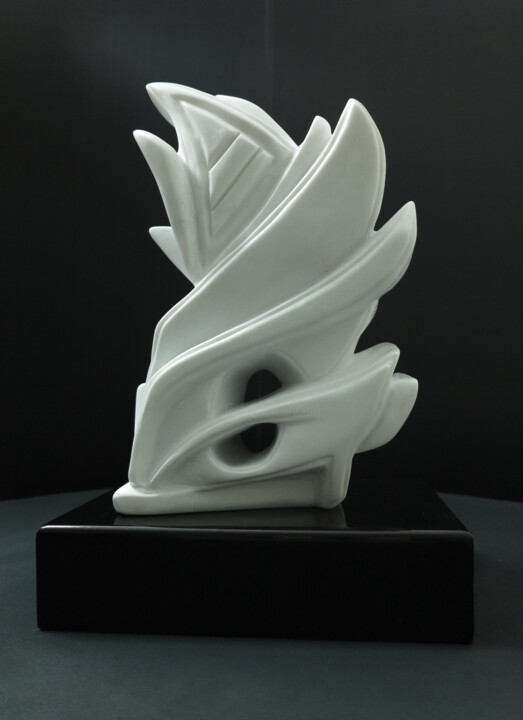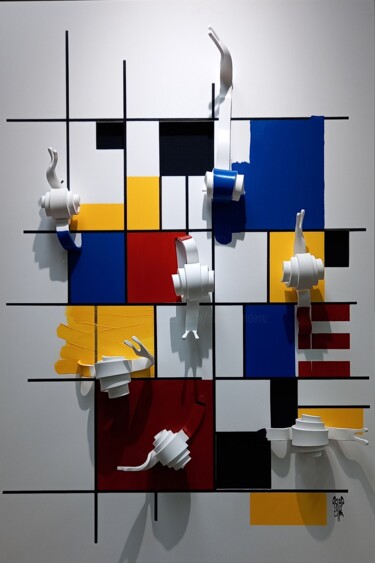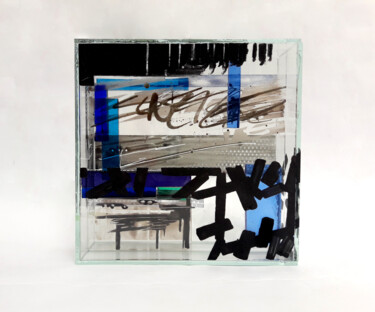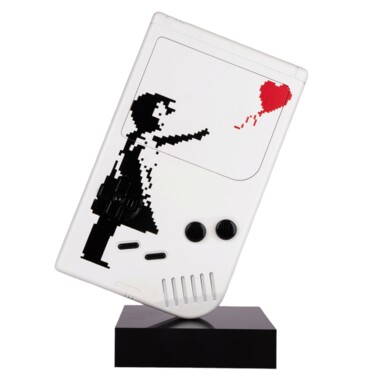189 Original Contemporary Sculptures For Sale:
How to define Street Art style?
Street Art is visual art produced in public spaces for viewing by the general public and is intended to spread a social and political statement. It has been referred to as "guerrilla art," "post-graffiti," "neo-graffiti," and "independent art." Street art is seen as the zenith of democratic art because it can be viewed by anybody and is not owned. Artists have introduced this unusual and democratic work into institutions and galleries throughout the past few decades, garnering recognition on a global scale and popularity in the "traditional" art world. The city and its residents have an impact on street artists' environment and sources of inspiration. Their main themes frequently examine ideas of popular culture, ads, cartoons, and urban settings. Street art is full of inventiveness and constantly looking for new techniques, supports, and materials, from the abstract to the figurative.
The fundamental idea behind street art is that everyone should have the opportunity to create art and have it seen by others, regardless of their race, age, gender, economic status, or other characteristics. It also believes that art should be accessible rather than hidden away inside galleries, museums, and private collections. Even though some street artists may make sculptures or installations, they are more well recognized for using uncommon art materials like wheat paste, spray paint, stencils, and stickers.
The most well-known artists of today developed their reputations on the streets. Graffiti artists like Keith Haring and Jean-Michel Basquiat, whose works were found on public walls as well as in galleries and museums, had a big impact on later generations of artists, particularly Banksy and Fairey. Street art has historically had a tense relationship with the art world as a whole due to its roots in illegal activity and distinctive interest in subversion, political, and social action.
Street Art sculpture
In sculpture, Street Art is a movement and a form of artistic expression characteristic of the late twentieth century, early twenty-first. Many sculptors have marked the history of this movement through his handling of volumes: this is particularly the case of Mark Jenkins and his hooded figures, but also of Isaac Cordal and his miniatures characters very critical of our social development, or the Gregos parisian with his persons making faces. Around the world, Street art sculpture continues to be a popular category of art and many of its creators have achieved renown and mainstream success.
Street Art Sculptors
Mark Jenkins (born 1970)
American artist Mark Jenkins creates sculptural street installations. Jenkins uses the "street as a theater" in his street art, allowing his sculptures to interact with the environment. With his hyperrealistic sculptures that he places in the streets across Europe and the United States, Mark Jenkins explores how people see the world. The staging is often uncomfortable and the faces of the people are frequently obscured. Since he wraps live figures in plastic films and tape, his technique is likewise hidden. The "cast" is then cut out, put back together without the figure, dressed, and given realistic features like hands and hair.
Gregos (born 1972)
French street artist Gregos began displaying his face on the buildings in Paris. He creates a reproduction of his face with his tongue out or smiling that he paints and adheres to the walls of Paris using his own 3D concept, which he designed utilizing all the techniques he had learned and refined over the years. Each face serves as a kind of self-portrait for the day, expressing the humor of the wearer and his past, present, and future.
The street art concept by Gregos is effective at encouraging conversation between the faces and among spectators. More than 500 faces have been installed so far, largely in Paris but also in other French cities and cities across the globe, including Europe, the United States, Japan, and South America.
Isaac Cordal (born 1974)
Isaac Cordal is a Spanish Galician artist who specializes in miniature art. His creations feature miniature animals built of cement, which is often thought of as the mark of civilization, and are positioned in unexpected places like gutters and puddles. Due to its small size (about 15 cm), finding them requires careful attention. They are frequently depicted in ordinary activities, and the setting choice can introduce new dimensions to the action. They typically highlight how ludicrous our current world is. The artist uses the sculptures as a metaphor to analyze politics, bureaucracy, and power.
Christiaan Nagel (born 1982)
Christiaan Nagel is a British street artist known for his oversized mushroom sculptures made from polyurethane which he places high up on buildings. They reach as far as Los Angeles, Cape Town, Berlin, Barcelona, London, New York, and Cape Town. These polyurethane mushrooms come in various sizes and individual samples or flocks. The artist claims that although mushrooms naturally develop, they require ideal weather and environmental circumstances, such as original artistic and scientific concepts.
Discover contemporary Street Art Sculptures on Artmajeur
Contemporary Street Art Sculptures are a type of original artwork that has gained immense popularity in recent years. The main types of supports used for these sculptures are walls, buildings, and public spaces. The materials used include spray paint, stencils, wood, metal, and plastic, among others. What makes this type of artwork unique is its ability to bring art to the streets and make it accessible to everyone.

©2023 2mé / Blondeau
Origins and History
Graffiti movement, which started in the 1970s, was a significant response to the lack of representation of marginalized communities in the art world. Graffiti artists used public spaces to express themselves and their messages. This movement led to the emergence of Street Art in the 1980s. Street artists started creating not only graffiti but also murals, stickers, posters, and sculptures using materials like metal, wood, and concrete. Contemporary Street Art Sculptures continue to evolve, with new artists and styles emerging all the time.

©2023 Sand
Evolutions of theses works in the contemporary art market
Contemporary street art sculptures have undergone significant evolution in recent years. The once-underground movement has gained mainstream recognition, with artists exploring new materials and techniques to create impactful works. This has resulted in a surge of interest in the contemporary art market, with collectors and investors seeking out these unique and thought-provoking pieces. The importance of these sculptures lies in their ability to challenge traditional notions of art, creating a dialogue between the artist and the viewer. Additionally, their placement in public spaces means they have the power to transform the urban landscape, making art more accessible and inclusive. As the street art sculpture movement continues to evolve, it will be fascinating to see how artists navigate the tension between commercial success and artistic integrity.

©2023 Shelby Artist represented by Studio Tangerine
Related Famous Artists
Contemporary Artists who specialize in street art sculptures are highly sought-after for their unique and innovative approaches to this popular art form. These artists use a variety of techniques and materials to create stunning sculptures that capture the essence of urban life.
One such artist is a sculptor who is known for his intricate and highly detailed work. He is highly skilled in working with metal, and his sculptures often incorporate found objects and other materials to create a striking visual effect. Another artist is known for his bold and colorful sculptures that incorporate elements of graffiti and street art. His work is highly recognizable and has gained a large following among street art enthusiasts.
Yet another artist is known for his large-scale installations that transform urban environments into works of art. His sculptures often incorporate elements of the surrounding architecture and landscape, creating a seamless integration between art and the built environment. Another artist is known for his use of unconventional materials, such as recycled plastics and other waste materials, to create whimsical and thought-provoking sculptures that comment on issues of sustainability and environmentalism.
Overall, these contemporary artists are highly skilled in their craft and bring a unique perspective to street art sculptures. Whether working with metal, graffiti, or unconventional materials, they are pushing the boundaries of what is possible in this exciting and dynamic art form.

©2023 Sagrasse
Notable contemporary Street Art Sculptures
Contemporary street art sculptures have become a significant form of urban art, capturing the attention of the public worldwide. Here are some of the most renowned street art sculptures and their descriptions:
The Fearless Girl - Kristen Visbal - 2017 The Fearless Girl is a bronze sculpture of a young girl standing confidently with her hands on her hips, staring down the famous Wall Street Charging Bull. The sculpture was created by Kristen Visbal and installed in 2017 as a symbol of female empowerment and gender diversity on Wall Street.
Balancing Act - Roa - 2018 Belgian artist Roa created Balancing Act, a sculpture of a giant rodent balancing on its tail, in 2018 in Melbourne, Australia. The artwork was inspired by the city’s thriving rat population and its ability to adapt to the urban environment.
Love Me - Curtis Kulig - 2011 Love Me is a sculpture of the words "Love Me" written in bright, bold letters. Created by artist Curtis Kulig in 2011, the sculpture has been installed in cities around the world, including New York, Paris, and Tokyo. The artwork is a message of love and positivity to the public.
KAWS: Holiday - KAWS - 2019 KAWS: Holiday is a series of five massive sculptures created by American artist KAWS in 2019. The sculptures depict his iconic Companion character reclining in various locations around the world, such as Hong Kong, Japan, and the United States. The artwork is a playful and whimsical take on travel and adventure.
The Knotted Gun - Carl Fredrik Reuterswärd - 1980 The Knotted Gun, also known as Non-Violence, is a bronze sculpture of a revolver with its barrel tied in a knot. Created by Swedish artist Carl Fredrik Reuterswärd in 1980, the artwork has become a symbol of peace and non-violence around the world, and is installed in various locations, including the United Nations headquarters in New York.
In conclusion, contemporary street art sculptures have become an important form of public art, bringing messages of empowerment, positivity, and peace to cities worldwide. These Artworks stand as a testament to the power of art to inspire and provoke thought.

Cyborg Corrigé
Sculpture - artwork_cat. | 63x35x30 cm

Eric Vialla (Tweak)
Sculpture - Metals | 38x130x44 cm

Jordan Jeffray
Sculpture - Acrylic | 95x28x22 cm

Carole Carpier
Sculpture - Resin | 21.5x6x8.5 cm
































